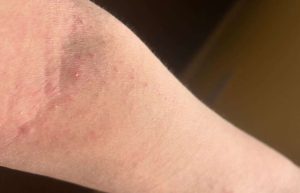In the past couple weeks, I’ve been looking a lot into what is known as Topical Steroid Withdrawal. It’s something that can be a little controversial and that doesn’t get the attention it needs. It’s misunderstood by doctors and dermatologists, often dismissed as ‘severe Eczema’.
Topical Steroid Withdrawal is not the same as Eczema and I’ve had to come to terms with the fact that I myself am going through it.
If you want to know a bit more about my own personal Eczema story you can read it here! Living With Eczema: The Good, The Terrible and The Itchy
Or you can find out more about what exactly Eczema is in What is Eczema: CC’s Ultimate Guide to Itchy Skin!
Why not pin it for later?
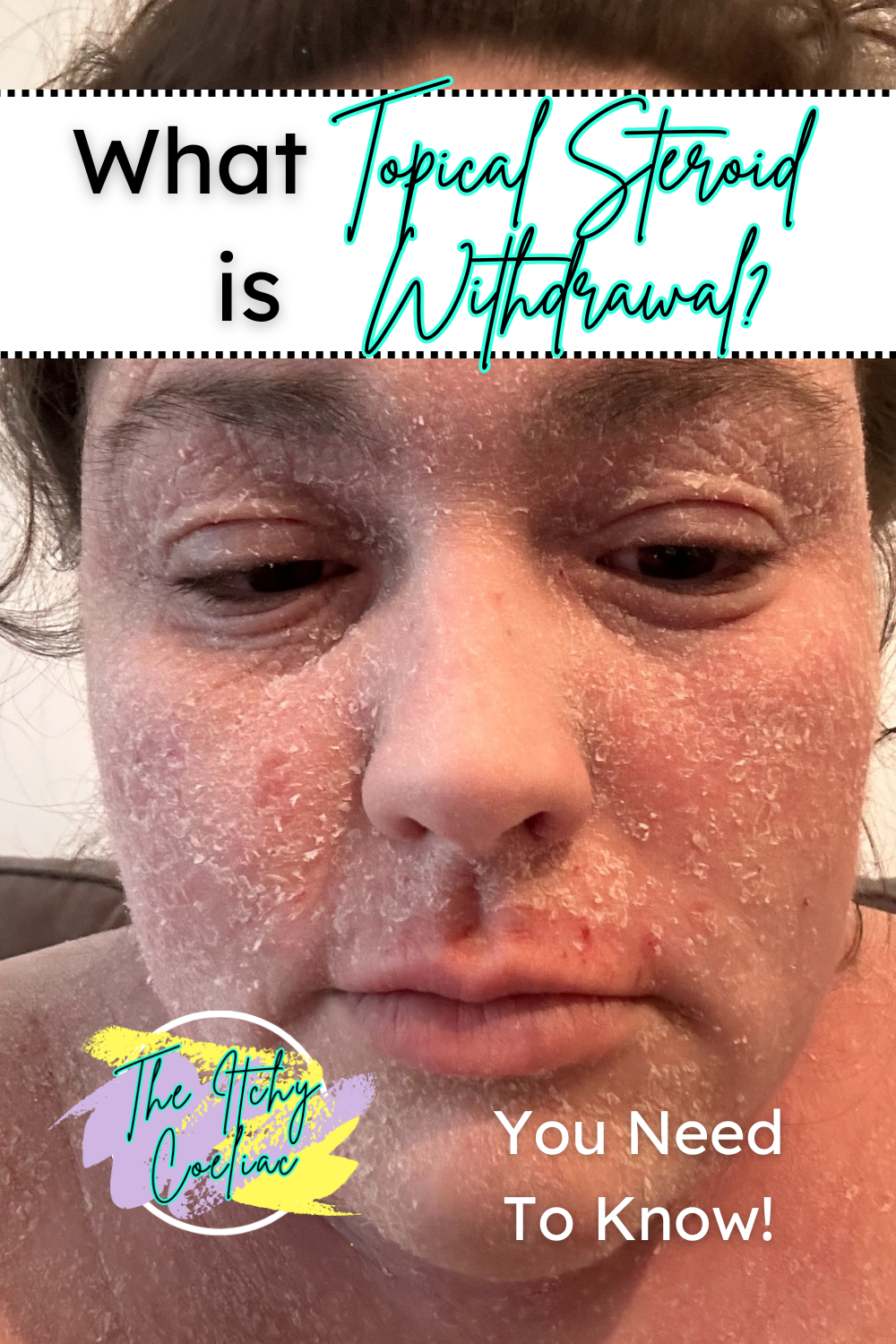
Have a read of this post to learn what Topical Steroid Withdrawal is, what to look out for and why it’s such a sensitive issue in the skin community. This one is a long one, but it’s an important one so please do read it if you can.
Quick disclaimer, all of this information is what I’ve learnt in the past couple of weeks from my own research and others personal stories. I apologise if there are any inaccuracies or if I’m not covering all the bases, I am still learning!
So what is topical steroid withdrawal?
Let’s start with the basics. What are topical steroids?
Topical steroids are creams that are applied directly to the skin which contain corticosteroids. These are synthetic hormones that aim to reduce inflammation. They can be used to treat a number of conditions and are often recommended to help treat Eczema. They’re usually prescribed by doctors but you can buy products such as hydrocortisone over the counter at the pharmacy.
Topical Steroid Withdrawal can also be known as Topical Steroid Addiction as it can occur while you are still using or between steroid treatments. Some people might suffer for years with TSA, not even realising that’s what’s happening.
TSW or TSA occurs through the use of topical steroids. At first, they work well to alleviate the symptoms of the skin condition. I know when I first began using topical steroids, I was blown away by the improvement I saw in my skin.
But over time, they stop working as well and the results become less impressive. Eventually they simply stop working and often areas of the body that weren’t affected earlier, start showing symptoms. This can often be mistaken as being your Eczema getting worse or an allergic reaction.
The International Topical Steroid Awareness Network (or ITSAN) says the following: “TSW Syndrome is an iatrogenic condition, which means it is a condition caused inadvertently by a medical treatment. Not everyone who uses topical steroids will develop TSWS. It is unclear why some individuals experience TSWS secondary to topical steroid therapy and why others do not.”
Definitely make sure to go take a look at their website. They have some amazing information and resources explaining TSW and they’re a key part of raising awareness.
What are the symptoms of topical steroid withdrawal?
TSW symptoms can often look a lot like…well, Eczema on steroids. I guess literally!
But the symptoms of TSW can be much more severe than your typical Eczema and cause a lot of issues for those that suffer with it.
Symptoms of TSA/TSW can include:
Red Skin Syndrome
Often the skin can come up with an intense redness. People are known to get what’s known as ‘red sleeves’ where their arms turn bright red. This redness can occur anywhere on the body. Some people might only get it in localised areas and for others it can be all over.
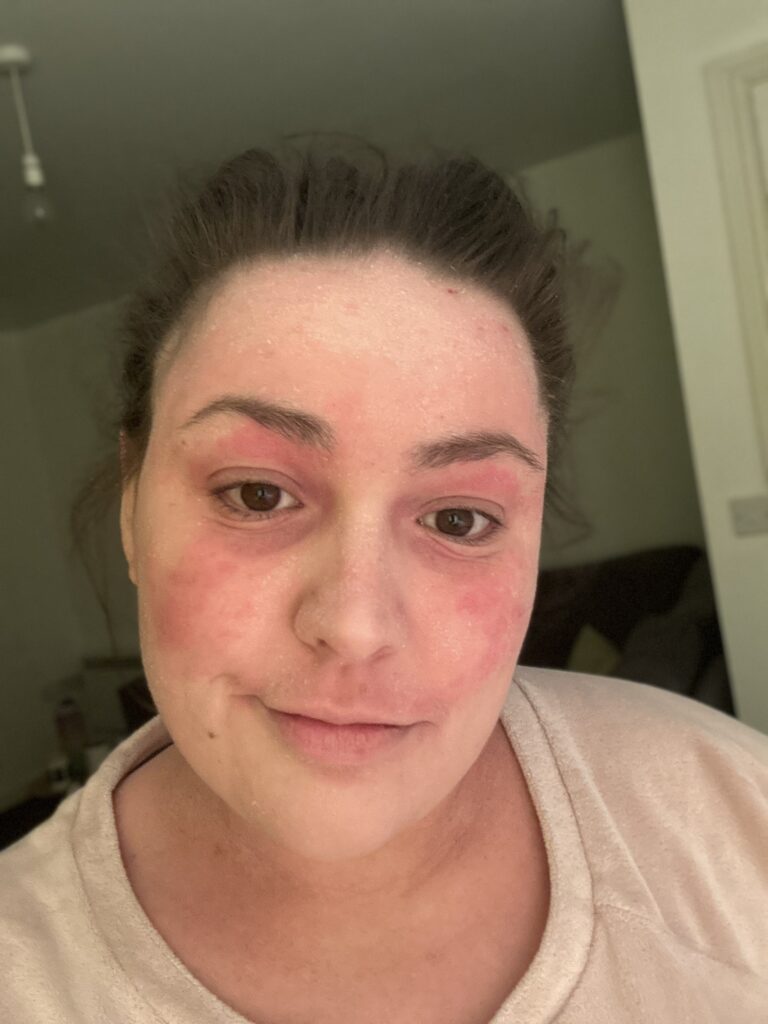
Burning and Stinging
The skin can feel like it’s burning hot and when touched with anything can become irritated and cause that stinging feeling.
Itching
Eczema is known for its itch but when it comes to TSW, the itching can increase ten fold. It can be relentless and often difficult to manage. For me, the itching is one of the worst things because it’s just so frustrating. It’s bone deep and no matter what you can never quite reach it.
Swelling
The inflammation can cause parts of your body to swell. My face blew up like a balloon, especially around my eyes. I also found that when my feet and hands were particularly irritated, they would also become swollen.
Oozing and Weeping
Another one of the more difficult symptoms is the way that your skin can ooze. A lot of my open wounds ooze and cause issues when wearing clothes or trying to sleep as the fabrics would stick to my skin. I also had a problem with my skin ‘weeping’. Liquid would just seep out my skin with seemingly no cause.
Dryness and Flaking
If you’ve dealt with Eczema or TSW then you know that flakes just become a normal part of life. When it comes to TSW, the flaking reaches crazy levels – or it did for me anyway. On the sofa, in my bed, on the carpet, on any surface. It’s an embarrassing one because nobody wants to know they’re surrounded by your skin flakes. Hoovering becomes a chore to be done multiple times a day.
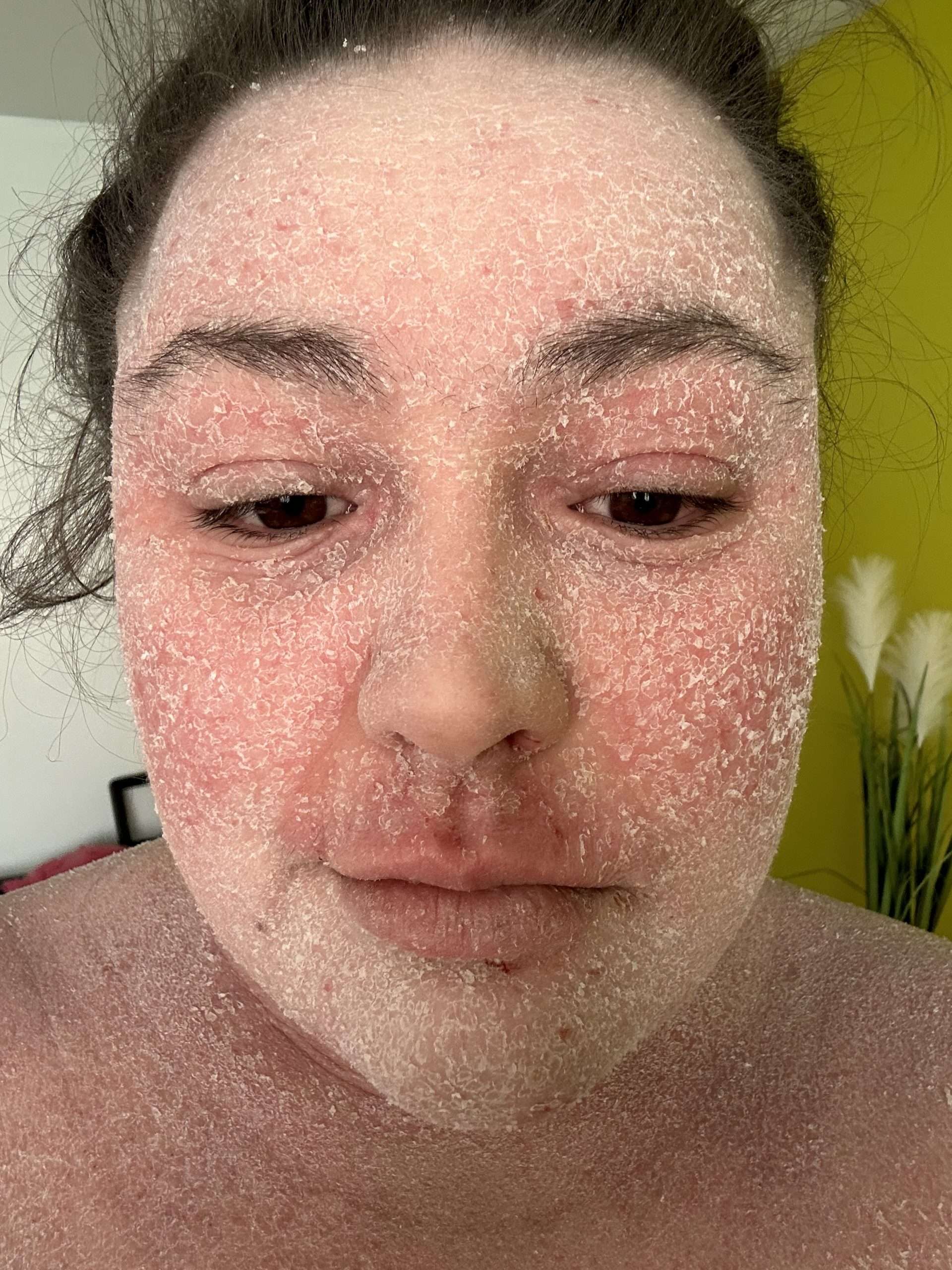
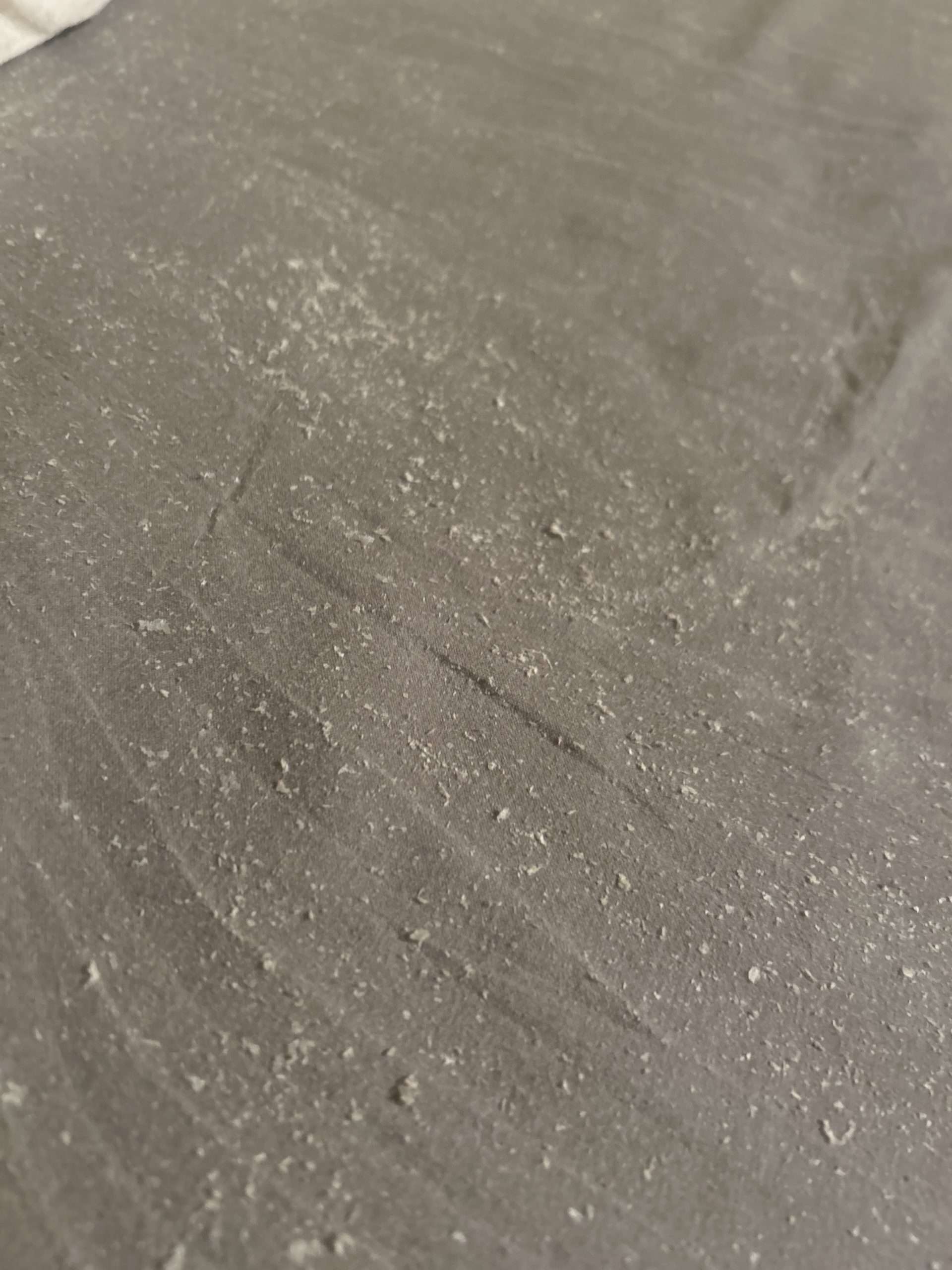
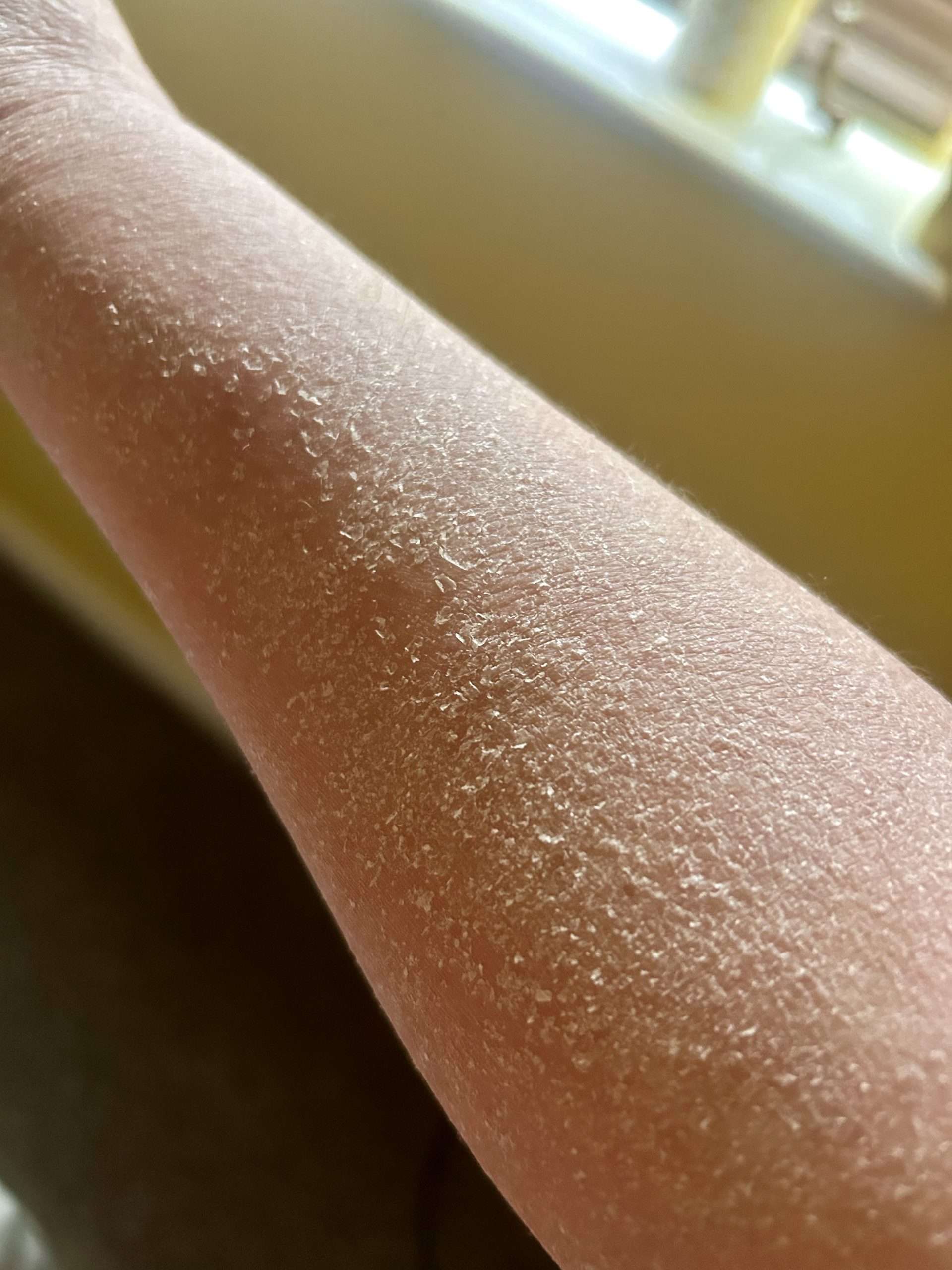
Insomnia
Sleep becomes a distant dream when you’re dealing with TSW Syndrome. Due to the various symptoms listed above, it can be difficult for your body to relax enough to get to sleep. You might be awake constantly because you can’t stop itching or because your skin feels so sore you’re just in a constant state of discomfort.
Rebound Flares or The Cycle
TSW tends to work in cycles. Your body cycles through the different stages of healing until it’s finally healed to the point where it doesn’t need to do that anymore. It often starts with the redness, the oozing, the burning and swelling. Then it usually dries out and you go through the intense flaking stage. You might get a small reprieve where your skin actually seems to be in good condition – because it is healing! And then you’ll start the cycle again. This can go on for weeks, months or years.
Skin Thinning
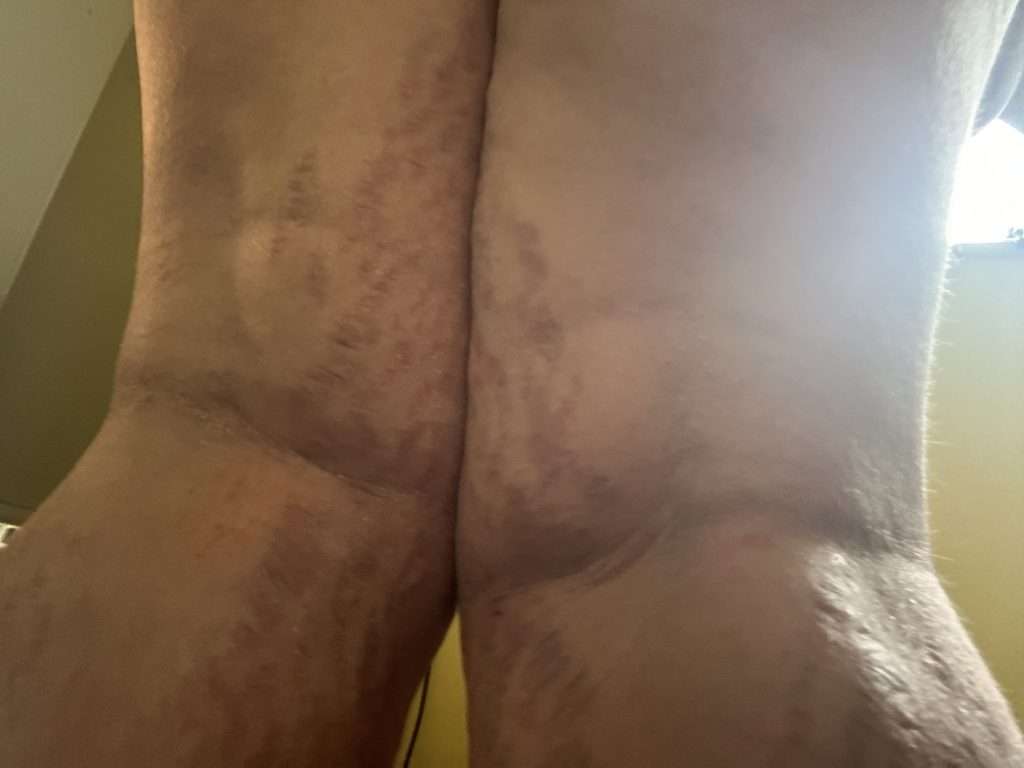
The use of steroid creams can actually cause your skin to become thinner. This was a symptom I got early on without even realising it. I developed huge stretch marks on my thighs and the backs of my legs. They appeared out of nowhere but turns out it was because my use of steroid creams was actually causing my skin to atrophy.
Hardened Skin
While steroid use can cause your skin to thin, it can also have the opposite effect and cause the skin to become overly thick. This is usually most noticeable in the joints – ankles, wrists, knees and elbows. Your skin can start to show deep, thickened lines, much like the skin of an elephant!
Symptoms can vary between each individual and not everyone will show all the symptoms. They can depend on a number of things such as the potency of the steroid used, the duration of its use and sometimes the area of application. Although generally with TSW, it tends to spread to areas where you might not have even used any steroid creams.
When you’re struggling with Topical Steroid Withdrawal, a huge part of it is the way it affects your mental health and your social life.
Most of the symptoms above can make it very difficult to just live your life. You can’t sleep so you’re constantly exhausted. You’re always either red and flared or some kind of flaky creature so you don’t want to see other people. The itch is so intense it’s all you can focus on so you struggle to do your work. For a lot of people, their skin can be so sore and painful that they might be housebound or even bedbound because it simply hurts too much to move.
All this plus the added stress of knowing it is a long term condition, can be a real knock to your mental health. Many people with TSW develop depression, anxiety and have some kind of emotional distress.
Some of the biggest mental blocks I came across when I realised I was going through TSW were:
- If this goes on for months or years I might lose my job. How will I pay my bills?
- I could be stuck in the flat for months, isolated and missing out on life.
- What if I’m not mentally strong enough to handle this?
How is Topical Steroid Withdrawal treated?
When it comes to TSW there are various different ideas about what is the best way to treat it. As it’s not a condition that is officially recognised by all doctors and medical practices, it can be hard to find a definitive solution. There’s little research been done into Topical Steroid Withdrawal so almost everything we know about it comes from the stories of those that have or are going through it.
The most important thing is that you stop using any steroid creams to prevent any further damage and allow the skin to begin healing.
These are some of the treatment ideas that I’ve found while I’ve been researching.
Before trying any of these, make sure to speak to your medical professional or a trusted dermatologist – I am not a qualified professional. Though I will be frank and advise that there are a lot of healthcare professionals out there that have never heard of TSW or deny its existence at all. It’s worth being prepared for that and if you are struggling to get help, again visit the ITSAN website where they offer advice and may be able to help you find a practitioner.
No Moisture Treatment (NMT)/Moisture Withdrawal (MW)
By far this was the most highly recommended treatment for TSW that I could find. I’ve read a number of different personal accounts that swear by it.
The basics of it are that you avoid all external moisture and allow your skin to heal itself naturally and encourage it to begin producing its own oils and moisture to restore the skin barrier. This is rather than having your skin rely on moisturisers or emollients to provide this.
It involves stopping the use of your moisturising creams or emollients and allowing the skin to dry itself out. If you are implementing the full NMT you might also reduce your water intake and limit your baths and showers.
This method of treatment can be useful as it reduces your skin’s dependency on external support. Over time your skin may regain its ability to self regulate moisture within the skin barrier. Not only is this good for getting through TSW but once you are through, it can also be beneficial if you continue to have Eczema afterwards.
When trying NMT/MW you can expect that in the initial stages, you’re going to go through a difficult time. Your skin is drying out after receiving a near constant flow of cream or emollient. There is a ‘settling in’ stage which unfortunately simply has to be waited out.
Many people choose not to go through this particular method, or their lifestyle simply doesn’t allow them to be able to.
During NMT/MW you can expect that you are going to have some challenges. Your skin will become extremely dry, tight and flaky. This can be incredibly uncomfortable. The dryness can also cause an increase in itchiness. You might find that you’re more itchy than before. This discomfort can often be very debilitating, causing those going through it to potentially have to be housebound or be off work for an extended period of time. For this reason, a lot of people aren’t able to take this particular route.
Red Light Therapy
RLT was another commonly suggested treatment option for TSW. Red light therapy involves using red or near-infrared light to penetrate the skin. The light is absorbed by the skin cells and helps to promote a number of health benefits. This can include faster healing, reduced inflammation and general improvement of your skin health.
Here’s a few ways that using RLT can help when you are suffering with TSW.
- By reducing the skin’s inflammation it can help with symptoms such as redness or swelling.
- RLT stimulates the skin cells and encourages damaged skin to heal faster.
- You might find that the itching and burning sensation is lessened through the use of RLT as your skin is less inflamed and irritated.
- Red light therapy is useful in stimulating the skin to create collagen. This helps with the skin’s elasticity and can help repair damage.
- It’s also useful for repairing the skin barrier as when that is stronger, you’re able to retain moisture much better which can help combat the dryness that is often experienced during TSW.
If you think red light therapy might be a treatment you’d like to give a try there’s a few things to keep in mind.
Again, make sure to check in with your dermatologist or doctor before trying it to make sure it’s appropriate for the stage of your condition. You also want to be thorough in making sure you’re buying the right equipment. There are a lot of ‘at-home’ red light machines on the market but it’s important you do your research. Some work better than others, so make sure you’re looking into them properly and try to get opinions from others that have used them.
Immunosuppressants
Immunosuppressants can sometimes be used to treat TSW as they help to reduce the inflammation and the immune response.

They basically work by dampening the body’s immune response which is responsible for causing inflammation and a lot of the symptoms of TSW. They can help reduce redness, swelling, and itching while the body works its way through the healing process.
There are a lot of different immunosuppressants that can be prescribed and they all work in slightly different ways. It’s important to do your research and discuss all the options with a healthcare professional. That way you can get all the information and make an informed decision on whether you think they might be the treatment for you.
There’s a bit of controversy when it comes to the use of immunosuppressants as they can come with a number of risks and side effects. It’s important that while using them you are monitored by your healthcare professional so that if there are any adverse side effects, they can be picked up straight away.
The way people choose to treat their condition when they have Topical Steroid Withdrawal is a completely personal choice. It’s important to listen to your own body and do what feels best to you. There’s no right way to do it. Especially as TSW is something that hasn’t been studied that much so it’s all just a case of trial and error.
The importance of raising awareness for TSW
I’ve said a couple of times now that Topical Steroid Withdrawal is not very well received amongst many doctors and dermatologists. Because of this, there are so many people going through it and getting little to no help. But why is it such a sensitive issue?
Well, topical steroids have been used to treat a number of issues, including inflammatory skin conditions, for decades. It can’t be denied that they do have some level of effectiveness – after all, some users don’t ever suffer from TSW.
Because of this, a lot of healthcare providers are hesitant to acknowledge that there may be potential negative effects. In a way it’s like that phrase, “well, we’ve always done it this way…”.
The other issue doctors and dermatologists have is that there is no standardised diagnostic criteria when it comes to TSW. This can sometimes make it more difficult for them to diagnose and separate TSW from other skin conditions. This is why TSW is often mistaken for ‘severe Eczema’.
This plus the limited research and awareness of Topical Steroid Withdrawal plays a big part in the way people (especially healthcare professionals) form their opinions on the condition.
Often those who are suffering with TSW have to advocate pretty strongly for themselves. They need to have the courage to speak up against their doctors and make sure they’re following a treatment plan that they’re happy with.
At my last dermatology appointment, I found it very confusing. The dermatologists are supposed to be the ones you can trust and who can offer you the help and support you need. But I knew that some of the things she was saying simply weren’t true. I had to trust in my own instincts and I’m now doing what is right for my body.
There’s a huge lack of awareness, both in the public and in the medical community. There are very few studies that have been done when it comes to TSW and it’s not very well covered in medical texts or training. There are plenty of personal accounts and patient testimonies but unfortunately these don’t seem to carry the same weight as large scale medical studies.
This is why it’s so important we try to raise as much awareness as possible. That way we can:
- Improve diagnosis and understanding generally among healthcare professionals. From that we can then improve treatment options that are available.
- Educate people about the potential dangers of topical steroid use and encourage safer use of steroids. This can help others to make more informed decisions about how they go forward with treatment.
- Provide the support that people suffering with Topical Steroid Withdrawal really need. It’s a horrible condition and having that validation and the support of others is crucial.
- Encourage future research into Topical Steroid Withdrawal so we can have a better understanding of the condition.
It can be difficult when you start to realise that maybe your Eczema isn’t quite Eczema anymore. Accepting that you’re in TSW can be a really confusing time. You’re scared because of the lack of clear research and medical advice. You’re probably shocked by the pictures and stories you’re hearing from other people that are going through it.
I found it really disorienting when researching it because there’s so much to it. Yet, when I went to see my dermatologist she told me it doesn’t exist? You’re kind of left wondering who to trust and wandering round blindly looking for some answers.
If nothing else, I hope this post might have given you a bit of guidance if you are wondering about TSW. Or if you know someone who thinks they’re going through it or they’re Eczema has started changing, I hope this has given you some information you can take back to them and have a discussion about it.
I know I’ve already mentioned them but ITSAN is a really useful resource if you are or think you could be dealing with TSW. They have a great support group on Facebook that I would really recommend you check out.
There’s also some great people I follow online that are doing an amazing job of spreading awareness and sharing their own experience with TSW. So make sure to go to my Instagram and take a look at the people I’m following!
It’s incredibly important more people know about Topical Steroid Withdrawal and the potential dangers than can occur from using steroids – so if you can share this, please do!





